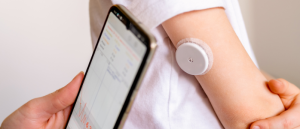Even amongst beta cells, there’s an alpha

A recent study identified that a special group of pancreatic beta cells are crucial for triggering the blood sugar response.
We know that beta cells of the pancreas play an important role in regulating our blood sugar, but are all beta cells equally sensitive to sugar? A team led by researchers at Technische Universität Dresden (Germany) have utilized zebrafish as a model organism to determine just this, hoping to better understand how beta cells function to develop better treatments for diabetes.
The ability to regulate blood sugar is essential to our health. When beta cells first recognize higher glucose levels, they depolarize to trigger an increase in intracellular calcium and the rapid release of a wave of insulin. The second phase of this process is a more sustained insulin release. This ability to regulate blood sugar is disrupted in diabetes, with individuals with prediabetes showing an impaired initial insulin release and individuals with type 2 diabetes additionally showing an impaired second insulin release phase.
To gain a deeper insight into pancreatic beta cell function, the researchers turned to a transparent model organism with organs not dissimilar from our own. Zebrafish offer researchers the ability to observe the pancreas in real-time in living fish. The team utilized optogenetics – a light-based technique that turns single cells on or off with a beam of light – to probe the role of individual beta cells in the glucose response, conducting targeted activation and inactivation of beta cells.
They observed that a particular group of beta cells respond quicker to glucose than the others. They called this group the ‘first responders’ and labeled the other group the ‘follower cells’. They wanted to find out if first responders’ activation is an essential part of follower cells’ glucose response. Using optogenetics, they turned off the first responder cells and observed that the follower cells subsequently exhibited a lower glucose response. When they selectively activated first responders, the follower cells’ response was enhanced.
 Novel device for diabetes management
Novel device for diabetes management
A new transistor-based sensor measures glucose in saliva, providing a novel option for the management of diabetes.
“The first responders lie at the top of the beta cell hierarchy when it comes to control of the sugar response. Interestingly, only about 10% of the beta cells act as first responders. It suggests that this small population of cells serves as a control center for regulating the activity of the rest of the beta cells,” explained senior author Nikolay Ninov.
The research team went one step further, genetically characterizing first responders to figure out what makes them different from follower cells. Comparing the gene expression of highly glucose-sensitive beta cells with less sensitive cells, they found that first responders play a role in the production of vitamin B6, expressing an enzyme essential to the transformation of inactive dietary B6 into its active form that can be used by cells.
When the B6 production was turned off in first-responder cells in the pancreas of both zebrafish and mice, they found that the beta cells’ response to rising glucose levels was reduced. “This indicates that vitamin B6 plays an evolutionarily conserved role in the response to glucose. It is possible that the first responders produce and supply Vitamin B6 to the rest of the beta cells to regulate their activity. Checking whether this indeed is the case is one of our next steps,” reported Ninov.
Now that they know that vitamin B6 plays a significant role in glucose response, the researchers are interested in exploring the previously researched link between this vitamin and metabolic disease as well as type 2 diabetes. By understanding more about beta cells and the factors involved in their proper function, we may be able to learn more about diabetes pathology and potential new treatments.





